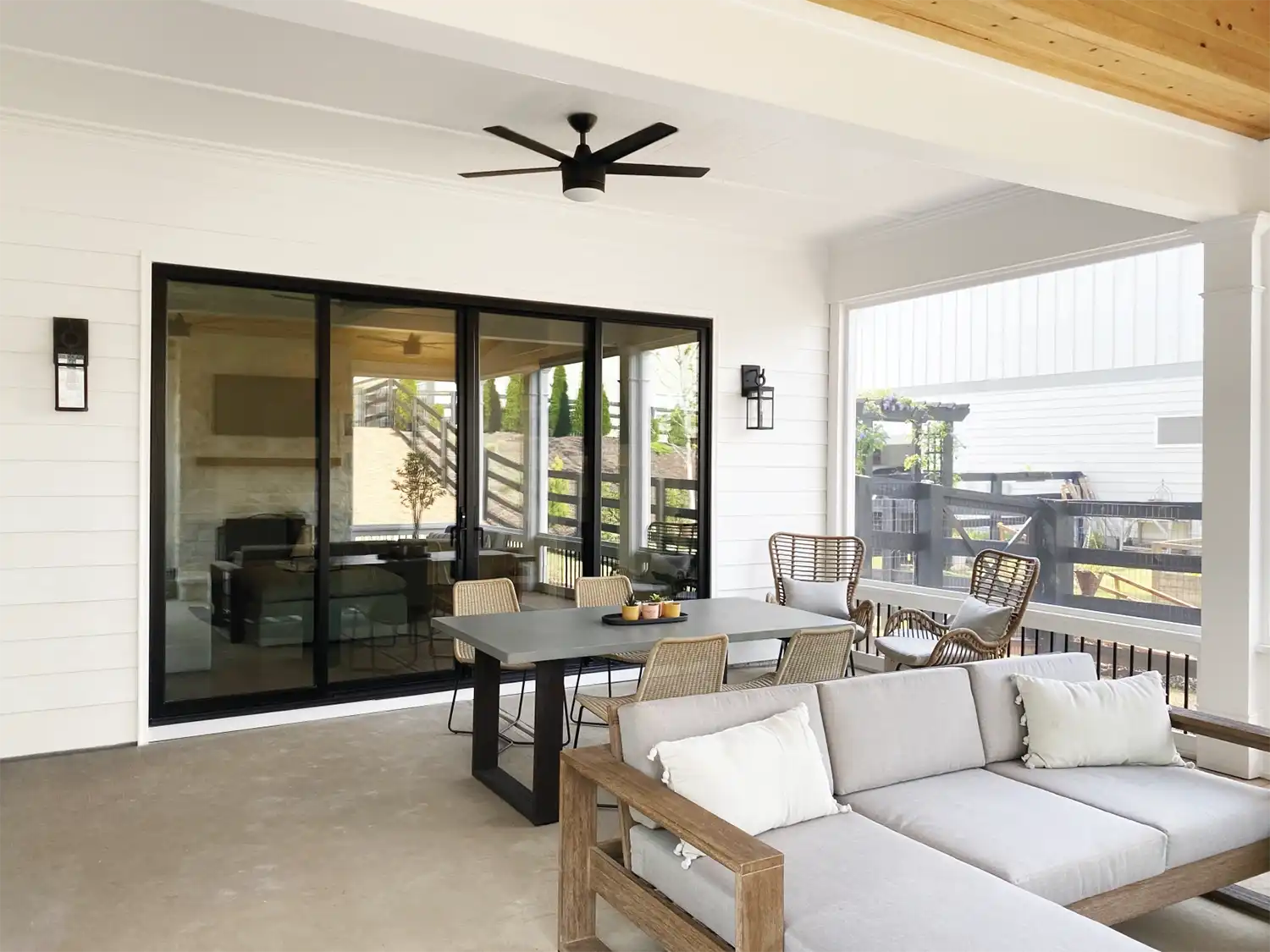
7 June 2024
Find Top Sliding Glass Doors + Patio Door Types
Tired of dealing with an aging patio door? Find out what types of patio doors are available. Consider material, style, energy efficiency, and options that can make a difference. Marvin Replacement design consultants can help you find the best sliding glass door. Here's what to consider about replacement patio doors.
Types of Sliding Glass Doors to Consider
Marvin Replacement offers a sliding French door and a sliding glass door. What’s the difference between French doors vs. sliding doors? Our sliding French door has a wider frame profile compared to our sliding glass doors.
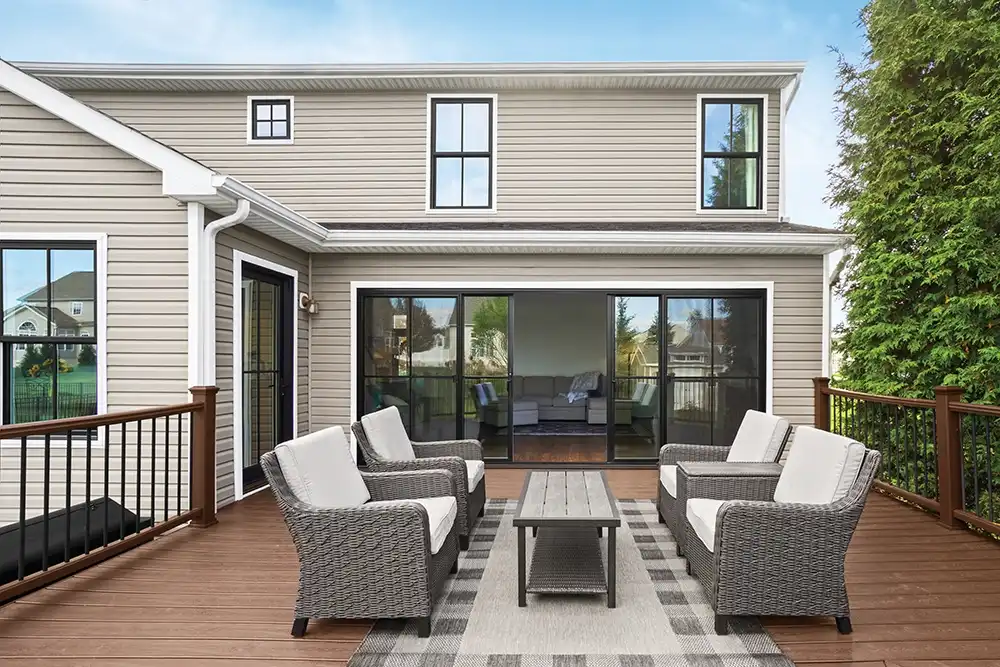
Sliding Glass Door
Sliding glass doors are among the most popular patio door types. They can let in more natural light than one-panel doors and don't interfere with furniture. Marvin Replacement’s Sliding Patio Door comes in 2, 3, or 4-panel configurations for up to a 16-foot wide view.
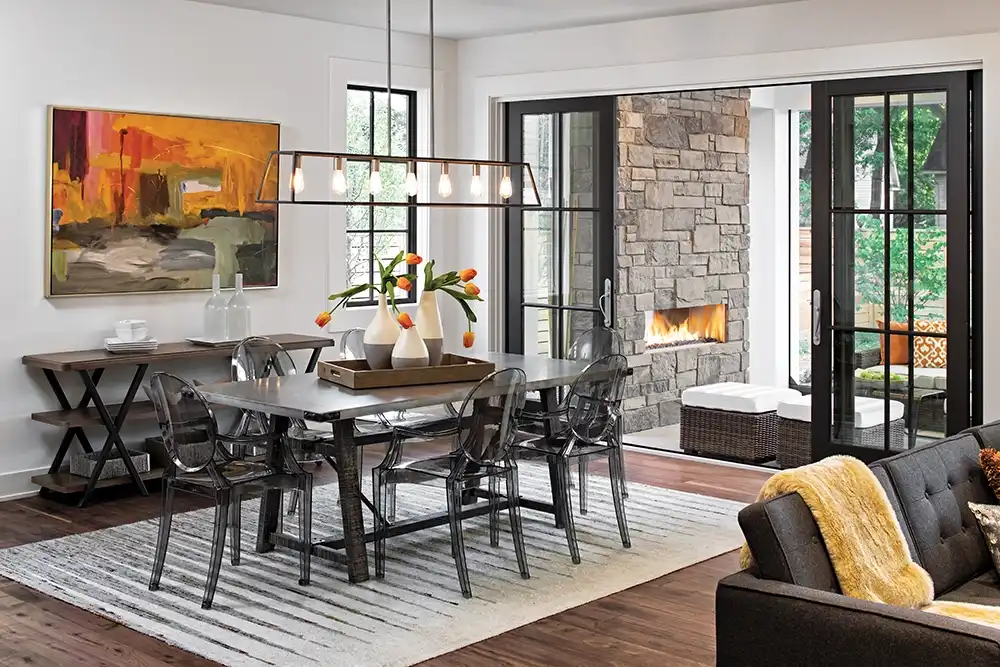
Sliding French Door
A sliding French door offers the same great functionality as a sliding patio door. But it features the wider profile of a traditional French door. Marvin Replacement’s Sliding French Door has 2, 3, or 4-panel configurations available.
Multi-Slide Patio Doors
Multi-slide patio doors extend your outdoor views and provide wider paths to outdoor enjoyment. While most sliding patio doors come as 2-panel doors, you can create 3-panel and 4-panel sliding patio doors. A Marvin Replacement 3-panel sliding patio door can open in all one direction. You can also choose a 3-panel sliding patio door that opens in the middle and slides to one direction or another. A Marvin Replacement 4-panel sliding patio door opens by parting in the middle. The configuration offers a wider entryway and panoramic views.
Additional Replacement Patio Door Types to Consider
If a sliding glass patio door isn’t a fit for your home, Marvin Replacement has other types of patio doors. Choose an exterior French door or a stunning bi-fold door. Each type of patio door has advantages.
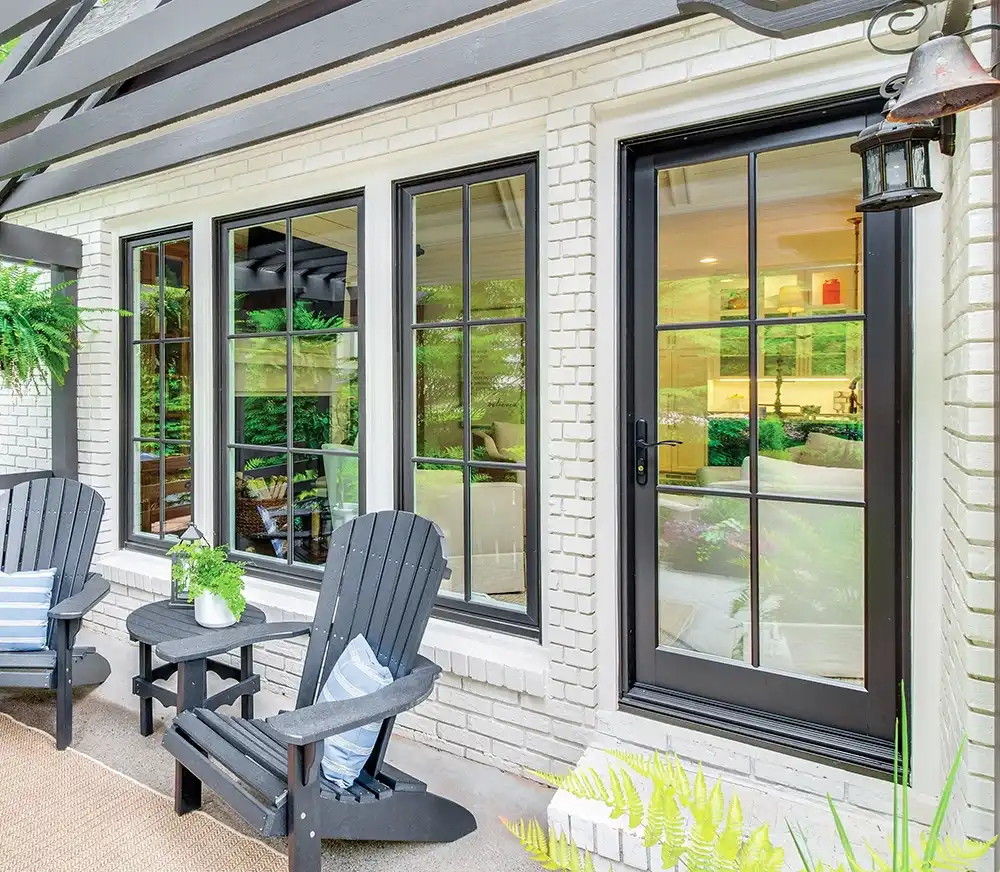
Inswing French Patio Door
Inswing exterior French doors can add design appeal and work great for smaller areas. Marvin Replacement’s Inswing French patio doors come in 1, 2, or 3-panel configurations.
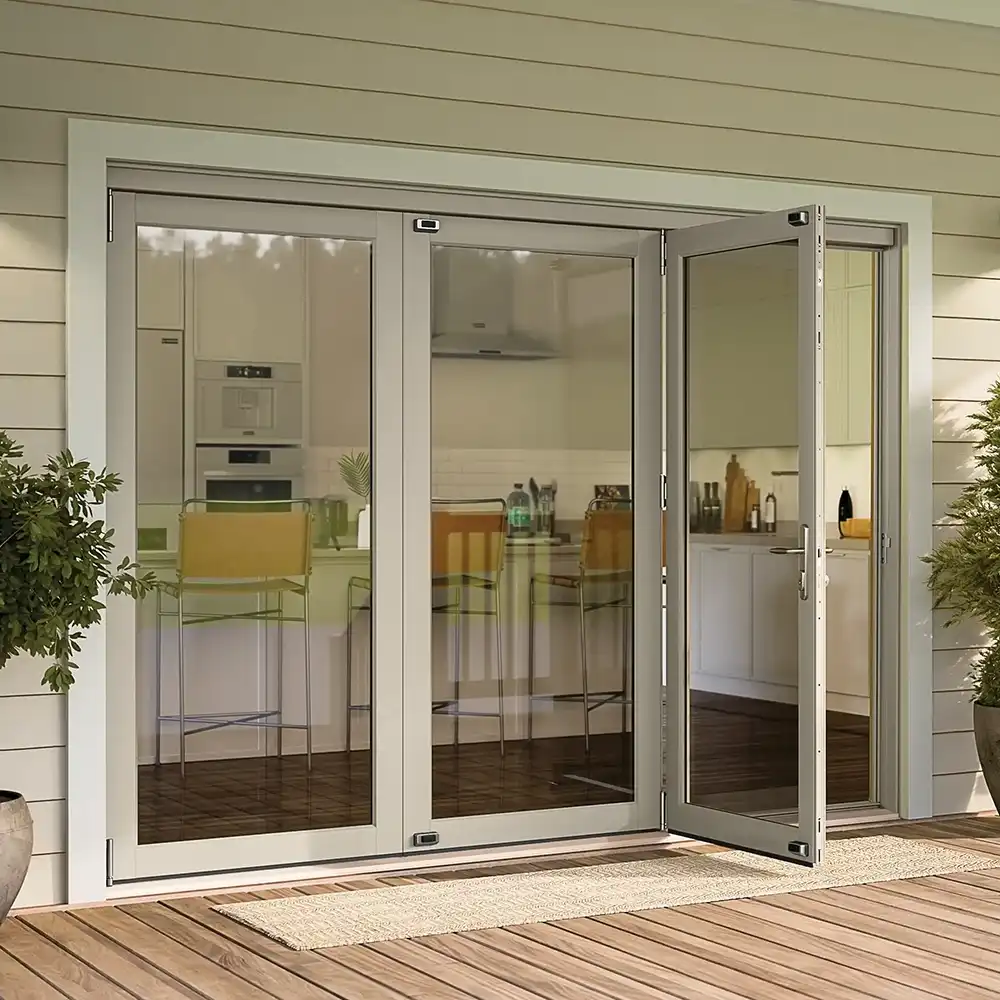
Bi-Fold Patio Door
Bi-fold or folding patio doors can provide expansive views and natural light. They also create inviting indoor-outdoor living. Marvin Replacement Bi-fold doors can include seven panels, spanning up to 22-feet wide.
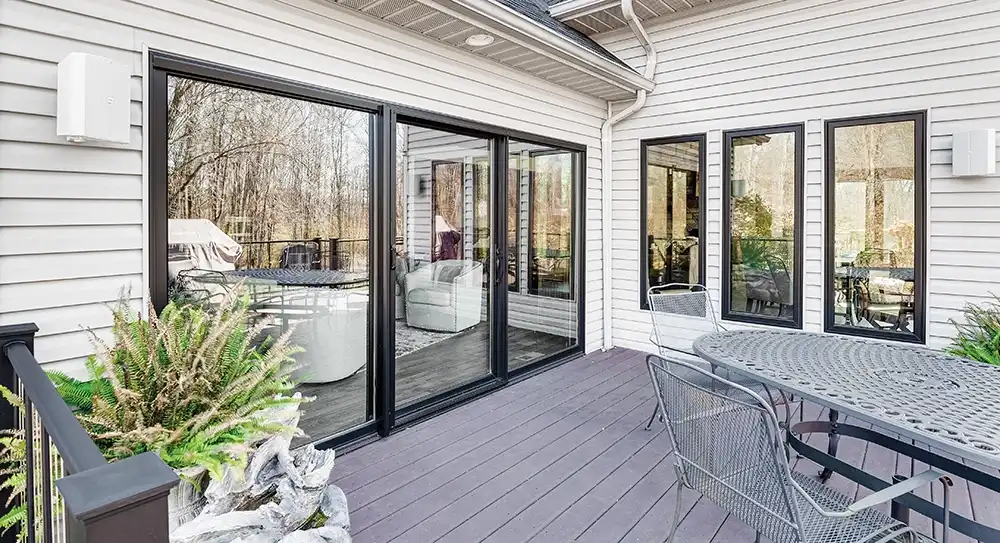
Sliding Patio Door Replacement
When to replace a patio door comes down to when you’re comfortable. Sliding patio door replacement takes time. Marvin Replacement makes it easy by handling all the details of replacing a patio door.
Patio Door Material Comparison
The material used to make a patio door can make a difference in the look, cost, and energy efficiency for your home. Common materials include: wood, vinyl, fiberglass, and aluminum.
Wood Patio Doors
Wood patio doors look great but may need more maintenance than other patio doors. With proper maintenance wood patio doors can last a long time.
Vinyl Sliding Patio Doors
Homeowners like vinyl patio doors because they don’t need much maintenance. They also come in a variety of colors. Vinyl sliding patio doors offer an attractive price point, too. But vinyl patio doors can expand and contract over time. Expansion and contraction can impact the smooth operation of a patio door.
Aluminum Patio Doors
Aluminum patio doors have durability but may need a little more maintenance if not treated. Aluminum is a metal and conducts energy well, which can impact energy efficiency
Fiberglass Patio Doors
Fiberglass patio doors offer more durability than vinyl patio doors. Marvin Replacement’s Ultrex® fiberglass is 8x stronger than vinyl. It has lower thermal conductivity than aluminum. That means homes keep more heat in winter and stay cooler in the summer. Comparing vinyl vs. fiberglass patio doors, Ultrex fiberglass has greater strength and stability.
Patio Door Maintenance
Our Ultrex fiberglass patio doors offer an excellent low-maintenance option. Our acrylic finish resists dings, dents, and fading. You won’t have to worry about painting or staining with Ultrex. Vinyl patio doors also don’t need much maintenance but lack the finish properties of Ultrex. Wood patio doors and aluminum patio doors need a little more attention to keep them looking good.
Marvin Replacement patio doors also feature a top-hung screen door design. Top-hung screens avoid dirt and debris that can accumulate on bottom tracks. Clogged tracks mean tough-to-open screens.
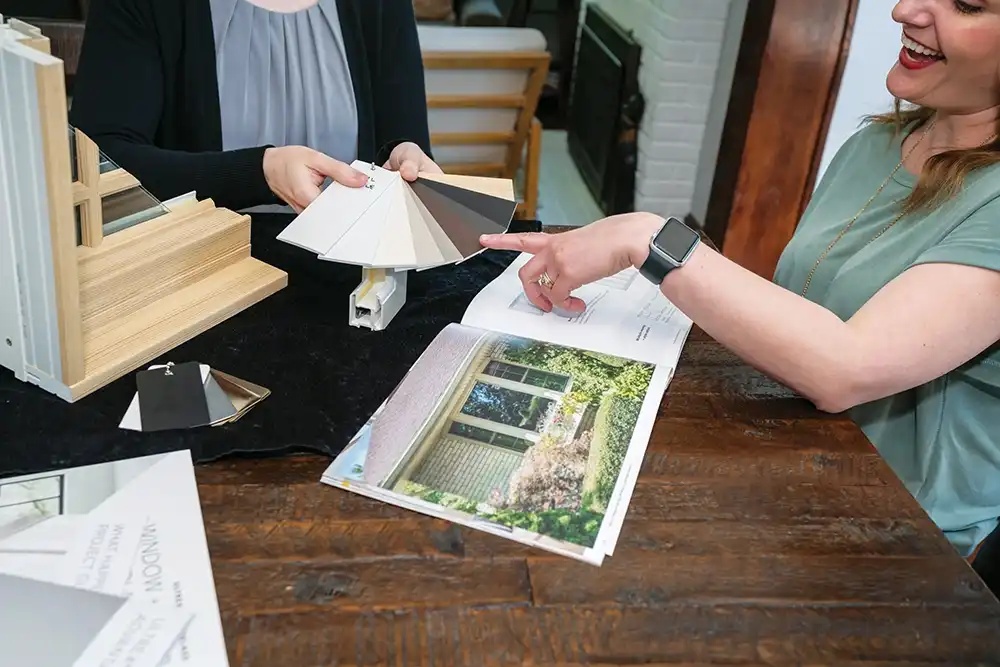
Patio Door Buying Tips
There’s a lot to consider when picking a patio door. The different styles and options lead to several decisions. You can ask friends and family about their patio door replacement experience. You can also enlist the help of an expert. Marvin Replacement has free, in-home design consultations so you can find the best patio door for your home.
Consider Space
First consider the space you have for a patio door. You might want to replace your existing patio door. You could also want a bigger patio door. If you’re thinking about expanding your patio door, you’ll need to consider the available space. An expert can help determine the feasibility of a bigger patio door.
Ask Friends and Family
Friends and family offer some of the best insight when searching for a patio door installer. They can tell you what they liked and didn’t like about a company. They can also tell you what to avoid with a patio door installer.
Talk to an Expert
Schedule a free Marvin Replacement in-home design consultation to get recommendations and advice. We’ll measure the space for your home’s exact specifications and talk you through all your options. After you pick your patio door, we'll handle all the details and installation.
FAQs
What is the best material to use for patio doors?
Ultrex fiberglass has greater strength than vinyl. It also has a longer useful life expectancy than vinyl.* Ultrex expands 87% less than vinyl. It can withstand extreme temperatures of up to 285° F without losing its shape. Vinyl can start to soften at 163° F.
Aluminum patio doors conduct heat well, meaning hot and cold air pass through. Ultrex is 5,000x less conductive than aluminum. That means homes stay warmer in winter and cooler in summer.
What are the best sliding glass doors for cold weather?
The best sliding glass doors for cold weather have good insulating properties. Our insulated glass and Ultrex fiberglass frames offer indoor comfort in cold weather.
Back to All Articles
You May Also Like
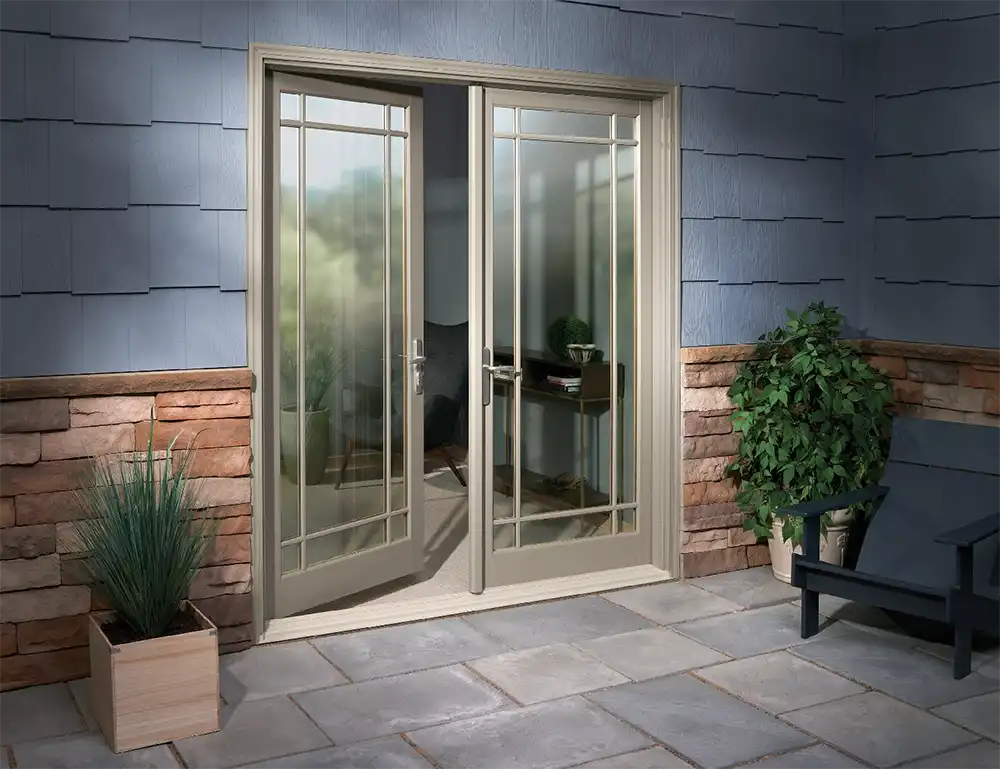
Exterior French Door Buying Guide
French doors have an elegance that other patio doors can’t match. Learn the differences between French door styles to help find the right one for your home.
Explore French door ideas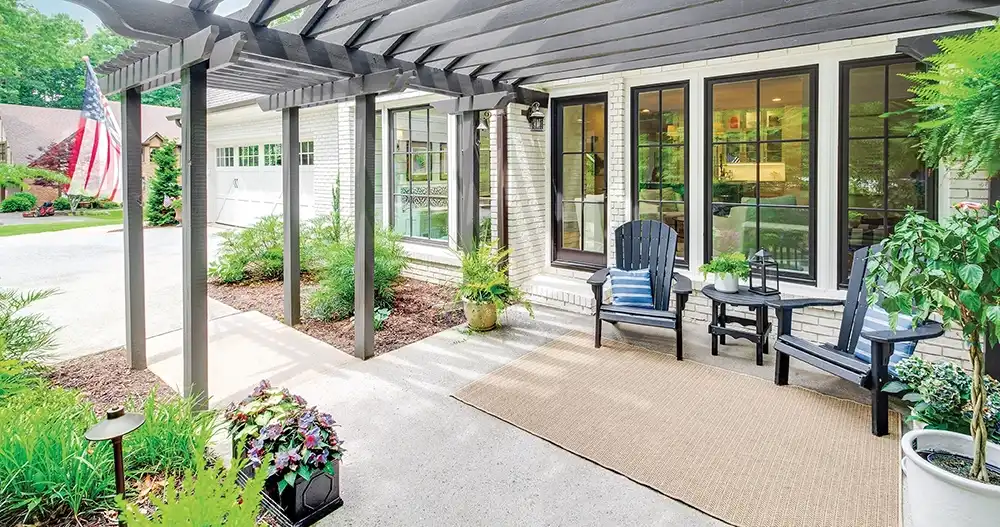
Indoor-Outdoor Living Ideas
What makes indoor/outdoor living attractive? The features and amenities. What should your indoor/outdoor living area include?
Indoor-Outdoor Living Ideas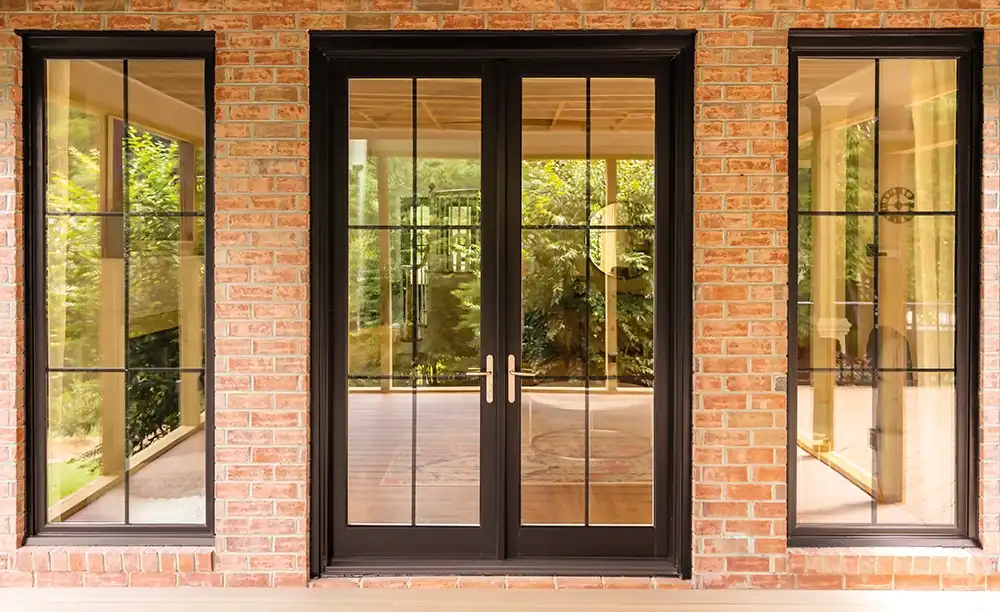
Patio Door Features + Options
Browse through all the available options and features for your patio door. View our color options, hardware styles, and screen choices.
Patio Door Features + Options